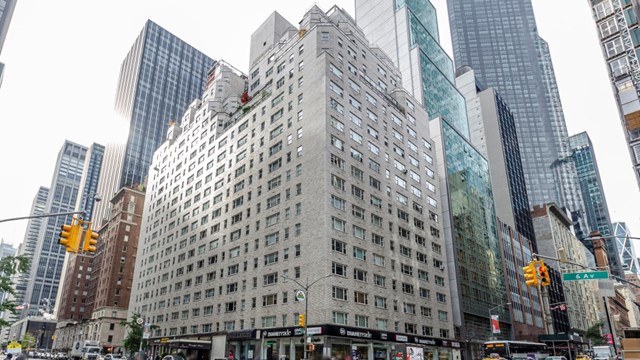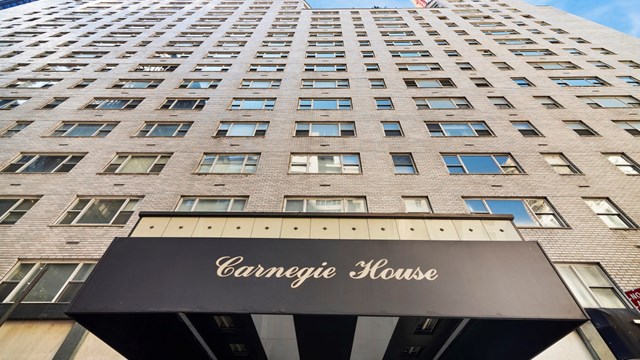When most people think of fat, they think of unsightly rolls on out-of-shape bodies, but the truth is, buildings can be over-padded, too. Given the stagnant economy, boards can't afford to let their buildings just wallow in fiscal waste. It's time to seriously trim the pork from your building budget. I'm not talking about mortgages and finance; that's not my department. Increased property taxes, insurance premiums, and utilities are facts of life in New York City, and while complaining may feel better in the short term, there are decisive steps you can take to lower the day-to-day expenses in your building - and avoid paying the price for waste.
When looking for where to save money on your building's payroll, the place to begin is overtime. I am not suggesting you eliminate overtime altogether, but there are times when overtime may not have been necessary - like when a repair could have waited till the next day. By the same token, if an employee calls in sick, ask yourself if this position could have been filled without using overtime hours?
Also consider other ways to compensate staff besides automatic overtime - what about swapping overtime for time off? There are those employees that would prefer to have time off rather then be paid for overtime.
Also examine your building's needs during the holidays. On holidays, your building staff should be bare minimum. This saves thousands in overtime pay.
Make more efficient use of your building's manpower. In the early "˜60s, there was a new breed of professional called an "efficiency expert" - sometimes referred to as the "hatchet man" - who specialized in cutting costs and boosting the productivity of a corporation or a business. Make yourself into your building's own private hatchet man. For example, most plumbers send out two men - a plumber, and the plumber's helper - yet a third of the time, only one man is really needed. If two men are needed, why not use your building's handyman or superintendent to help out instead of paying for the plumber's helper? The difference is about $30 to $40 per hour.
Ask yourself: aside from the occasional plumber's assistant, is it necessary to call in professionals for every little problem or project? In most buildings, the building staff moonlights as painters and general repairpersons. Talk to your staff and see if they would like to make extra money by doing some of the work that normally a professional would do. The best example of this approach is touch-up painting in halls and stairwells. You could even ask your managing agent if staff that work in other properties would be interested in some side money. Now, I know what you're thinking - insurance liability. Not much can go wrong in repainting the halls, right? Like property taxes and inflation, it's a fact of life. If your building is adequately insured, it's cheaper than bringing in a pro to touch up a scuff on your foyer wall.
Peter Roach, a resident manager on the Upper East Side, applies some preventative maintenance that's worth its weight in gold in saving on building expenses over the long term. "By maintaining the pumps and filters on a regular basis, the building has hardly ever had to call in an outside contractor," says Roach. For example, before he took over, Roach explains that all the work on the marble floors and brass fixtures in the lobby were always contracted out. "But by doing the floors and metal ourselves, we not only save money, but also can do a better job," says Roach. He also helps beautify the property by doing some of the landscaping work in-house and even paying for the cost of materials himself. "I buy the flowers for the front of the building, and plant and maintain them - and this saves on the cost of a landscaper."
Landscaping is an especially costly item. Co-ops and condos can save a little money, Roach suggests, by setting up a formal committee, raising the necessary funds to buy the plants, flowers, and landscaping materials, and having the committee members and other volunteers do the actual planting. This sort of activity is not only rewarding but promotes a spirit of cooperation not to mention a healthy management-owner relationship.
Is your building still using Stone Age heating controls? There are new technological controls out there that can modulate your HVAC systems more efficiently, keeping residents comfortable and paying for themselves in under a year. If new equipment just isn't an option, then lower the indoor heating temperature in the building by one or two degrees. Most residents won't feel the difference, but your building will save hundreds of dollars on fuel costs over the course of the year.
Last year's drought may be over, but the flood in higher water rates is yet to come, if your building is riddled with drippy appliances. You could literally say that every minute of a drip is a penny down the drain. Now if that drip is a hot water drip, add another 1/3 penny per minute. Want to save money? Eliminate the drips. Toilets are notorious for water waste, since it's often hard to detect drips by sound. You can run a colored dye through the bathroom plumbing in your building to determine where a leaky pipe is, as well as how bad it is. For a few dollars invested in rubber washers, your building could save thousands. (If only we could get those returns in the stock market!) Remember also that if you're on a water meter, your sewer bill is calculated, according to water usage.
Is your building making use of the new, energy-saving light bulbs? Many boards shy away from using them, protesting that they're not only expensive, but also harsh and "fluorescent-looking." Wrong. The new bulbs out there are so close to the incandescent type, it's hard to tell the difference - except when the electrical bill comes in. And the new bulbs really aren't too expensive, when you consider the purchase price of an energy-efficient bulb to the purchase of four or five standard bulbs. Not to mention the labor cost in changing burnt-out standard bulbs. Also consider that areas that don't need the lights on all the time can be placed on timers or motion sensors.
Make use of buying services and products at reasonable prices. Many home and office supply stores offer discounts for buying in large amounts. Your manager should take steps to make better deals with suppliers for discounts. For example, management companies that have multiple buildings using oil heat should consider buying all their fuel oil from one supplier, and making arrangements for a better oil price, given the volume of the total purchase. The same might be said for the plumbing and elevator companies serving multiple buildings.
Uniforms and other products needed by your staff can also be purchased less expensively if done in bulk. In the past, only two major uniform suppliers serviced co-ops and condos; now there are more than five companies looking for your business. Management companies could take advantage of this situation by banding together to get the best possible price on uniform rentals. In some buildings, the doorman's uniforms are rented, while uniforms for the porters, handymen, and superintendents are purchased on a regular basis. Also consider washing and maintaining the uniforms yourselves so that they need to be rented or purchased less often.
Keep close track of any contractor's time. Just because a project estimate states a price doesn't mean it's accurate or fair. Often, contractors pad their estimates to allow for the unforeseen as a kind of insurance policy. But what happens if the unforeseen never happens? That initial estimated price is rarely lowered by the contractor. If you - or your building's construction manager - has kept records of the time spent on a job, you can refer back to the estimate, and might find money to be saved. All estimates should clearly state "man hours" and how many people worked on the job, as well as estimated completion dates or times.
Joseph Hill, a resident manager for over ten years, suggested that his building's board adopt several cost-saving measures. First, he recommended charging residents a moving fee - to cover the costs of people moving in and out of the building. Secondly, Hill advocates installing storage bins and charging residents for the service. "Most people can use more storage space, and in some buildings, it's common that storage space is either not well-used or not in use at all." Other revenue-enhancing opportunities, says Hill, are renting out common areas for parties or community functions and creating space in your building to install an in-house gymnasium.
One of the fundamental reasons for forming a cooperative or condominium association is to pool common resources and assets and work together towards a common goal. Different co-op and condo boards, for example, might belong to the same management company. What's wrong with having a meeting two or three times a year to compare organizational strategies and come up with some collective budget-saving ideas? Pooling ideas and resources may just make an important difference. For example, vendors typically wait four to eight weeks for payment on goods and services rendered. Think about this. Maybe the vendor would be willing to give a discount if the invoices were paid more timely - perhaps, within 21 days or so of the billing date. The vendor might say no, but you never know until you try.
No one solution can save enough money to cover the cost increases that buildings are experiencing right now. But add all of the above suggestions together, and you may find that it closes some gaps. Besides - thin is in: it's just good business sense to trim the waste.
Peter Grech, a building operations consultant, is president of The Superintendents Club of New York and a frequent contributor.







Leave a Comment